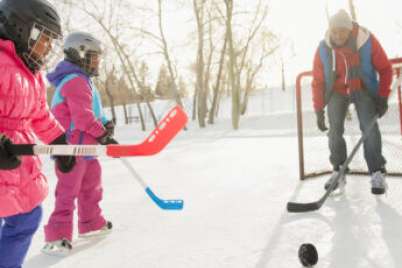
How children’s physical deconditioning adds to inactivity
In recent years, children’s inactivity has become regarded as a major public health issue. When people try to identify the root causes, they cite reasons ranging from smartphones to dangerous streets and overprotective parents.
These are certainly factors, but there are also others less visible. One is simple physical deconditioning.
The problem of physical deconditioning
As kids fall into sedentary behaviours and engage less in active play, they are losing much of the strength and stamina needed to be active. However, the problem doesn’t end there. As a result of this weakened state, they also appear to be losing the basic postural alignment and musculoskeletal functionality to move well.
In his 1998 book Pain Free, anatomical physiologist Pete Egoscue observed that kids already seemed to be losing the basic postures and strength required to move properly. He saw how increasingly sedentary lifestyles were leading them to becoming physically deconditioned, and how that deconditioning was in turn leading to pain and injury due to dysfunctional movement patterns.
Deconditioning has become more common
Today, the problem seems to be growing. Chiropractor Dr. Cale Copeland has seen it in his family practice in Victoria, B.C.
“Overall, I have seen kids who have been less active with more slumped postures,” says Copeland. “That sort of deconditioning tends to lead to issues like pain in the knees or hips, or shin splints, and not wanting to participate in sports or PE class in general. I have kids whose parents bring them in because literally it hurts for them to run.”
Richard Gregory, an athletic therapist and osteopathic manual practitioner in Ottawa, sees similar things with the children in his clinic. He believes these types of movement-based problems are becoming more common.
“I would say that the injuries are largely classified into two categories,” says Gregory. “The first category would be traumatic, where someone fell on them or they fell off their bike, and they received a physical trauma to their body. The other category is the non-traumatic injury that comes on with no obvious mechanism of injury. It’s children describing pain when jumping, for example, or general soreness after activity. Sometimes they might simply say they don’t like an activity that they’re doing, because they don’t know how to articulate that their knee is buckling to the inside when they land, and it’s giving them pain. Instead they might just say they don’t want to do that activity.”
Fundamental movement skills are essential
At Concordia University in Montreal, professor Richard DeMont is part of a team that has been studying the links between movement competency and injury for several years. Their research suggests poor fundamental movement skills are connected to higher risk of injury.
“We have linked fundamental movement skills to injury prevention skills, such that we believe early fundamental movement skills that incorporate injury prevention techniques will not only improve movement competence but can also reduce injury risk in adolescence and potentially throughout an active life,” says DeMont. “We already know that higher levels of physical activity are associated with better performance on fundamental movement skills.”
Overweight and obesity compound the issue
Overweight and obesity in childhood is adding to the problem of compromised movement skills. Research has established that poor functional movement is more common in children who are overweight and obese, with the extra weight altering their movement dynamics and thereby limiting their physical activity. Overweight and obesity are also associated with actual changes in musculoskeletal structure, and it has even been speculated that poor movement patterns in childhood may eventually lead to orthopedic abnormalities in later life and the inability to do some daily tasks.
Addressing overweight, obesity, and movement skills
What is the solution? Treating the problem of overweight and obesity requires a multi-pronged approach of its own. Fundamental movement skills can be addressed in a couple of simple ways.
Formal movement training through physical education classes and organized sports is one route for developing fundamental movement skills. Daily active play is another. Gregory points to how traditional active play is one of the best teachers of movement mechanics.
“If kids end up at the clinic, we try to teach them a blueprint for how that body part should move,” says Gregory. “Sometimes they learn it on their own in the playground, because they have fallen a bit here and there, and they have picked themselves up, and they have realized that they can only jump a certain height. If they practice and get stronger, and they jump more frequently, they learn subtle cues on how to land and position their centre of gravity so they naturally avoid injury.”
The best medicine is prevention
There are many factors that contribute to children’s inactivity, but deconditioning and diminished movement skills loom large. If you suspect a child is struggling with physical activity because of poor functional movement, you may want to see a pediatrician, physical therapist, or chiropractor for a consultation. You can also talk with your child’s physical education teacher and consider how your child performs in relation to these physical literacy checklists.
The best approach to avoiding movement problems is being active early in life. If you have a child who is preschool age, help them with fun physical activities at home. You can also sign up for the Active Start newsletter for fresh ideas as they grow. If you have older children, look for quality sport programs that offer them structured development in physical activity. Throughout it all, keep it fun and you can be sure that your kids will be more inclined to stay active for life.





